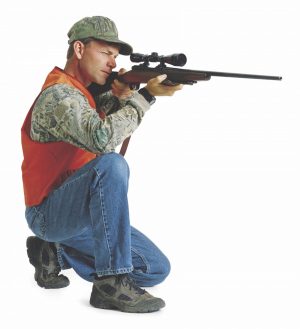Hunting Tips from Alberta Fish and Wildlife
Submitted by Alberta Fish and Wildlife Enforcement Branch
Hunting season is upon us, and it is important that hunters continue a tradition of responsible hunting practices while keeping well informed about current hunting regulations and requirements.
There are numerous regulations hunters need to be aware of before heading out into the field. Hunting and fishing regulations are available online at http://albertaregulations.ca.
Access to lands
It’s also important to plan ahead when deciding where to hunt.
One of the most common complaints officers receive is hunting in locations where permission is first required. In Alberta, there are about five million acres of public land under agricultural lease that hunters may access. If you wish to access agricultural public land, you must first contact the leaseholder and provide information about your visit.
Although leaseholders must allow reasonable access to the land for recreation, there are some circumstances where the leaseholder may deny or apply conditions to access.
For more information about accessing agricultural leased land, visit https://www.alberta.ca/accessing-agricultural-lease-land.aspx
Similarly, if you wish to access privately owned land, you must first contact the landowner, or the landowner’s designated contact person, for permission. In contrast to the holder of an agricultural or grazing lease, a landowner may deny you access for any reason.
Use respect. Always contact the leaseholder or landowner before entering onto agricultural public lands or privately owned lands.
Hunting in bear territory
Hunting in bear territory requires extra caution. Being quiet, using animal attractants and calls and travelling alone mean that hunters place themselves at a heightened risk of a bear encounter.
Before you leave home, make a plan for lowering the risks and for responding safely in a bear encounter. Here are some tips:
• Carry bear spray and a noisemaker. Keep them on you and know how to use them.
• Remember animal calls may also attract bears. Distress or mating calls, decoys and cover scents can attract bears as well as game.
• Be cautious when tracking a wounded animal. Bears may also be attracted to animals that are wounded. When possible, have a partner keep watch.
• If you see a bear, leave the area. Don’t risk an encounter.
Report A Poacher line
Lastly, the Report A Poacher program helps us ensure our wildlife and outdoor spaces are protected for future generations. Officers cannot be everywhere at once, and this program is a way for the public to help us protect our natural environment.
Report A Poacher can be reached all day, everyday at 1-800-642-3800 or online at https://www.alberta.ca/report-poacher.aspx.
Poaching covers a wide range of violations including fishing or hunting out of season, night hunting, hunting from the road, exceeding limits, hunting while impaired and illegal sales of wildlife or fish.
It can also be used for reporting major violations to land and habitat such as tree harvesting or destruction of stream beds.

